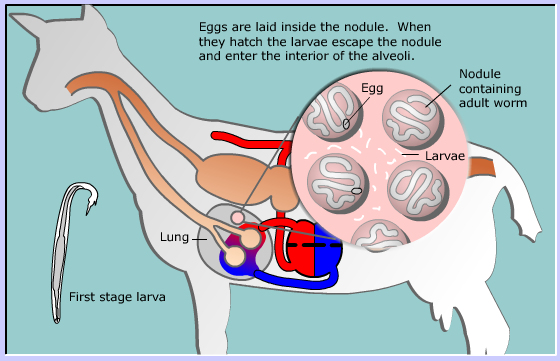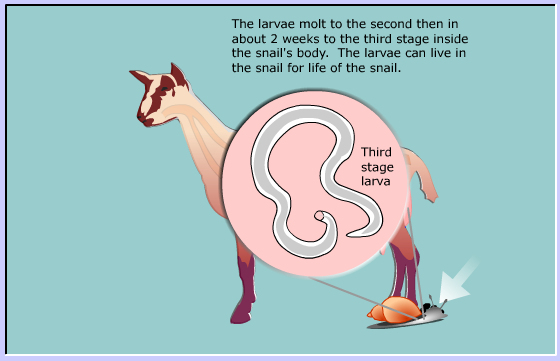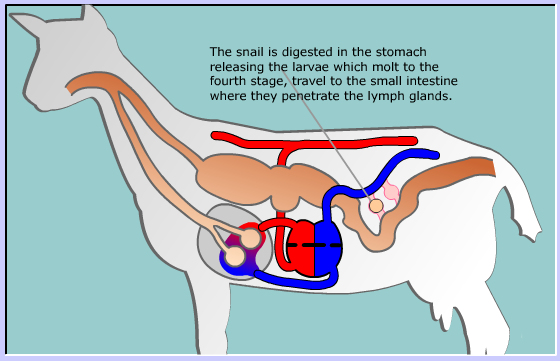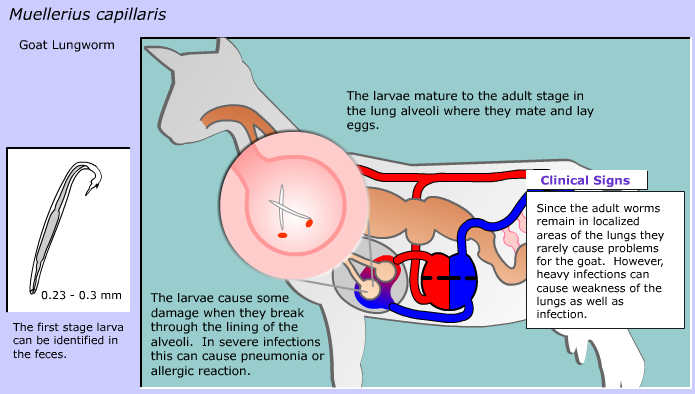The Biology of the Goat
Muellerius capillaris
Goat Lungworm
The tiny, white adult goat lungworm lives in the lung tissue within a grayish colored nodule

Eggs are laid inside the nodule.
When they hatch the larvae escape the nodule and enter the interior of the alveoli.

The first stage larvae migrate up the trachea and are swallowed.
The larvae move through the digestive system and are passed with the feces.

Larvae are most active at moderate temperatures 63° to 80° F (17° - 27° C)
and can withstand fairly dry conditions.

The larvae live free in the feces or soil.
They must penetrate the body of a land snail or slug in order to continue their life cycle.

The larvae molt to the second then in about 2 weeks to the third stage inside the snail's body.
The larvae can live in the snail for life of the snail.

The goat becomes infected when it accidentally eats the snail while feeding.

The snail is digested in the stomach releasing the larvae which molt to the fourth stage,
travel to the small intestine where they penetrate the lymph glands.

From the lymph vessels the larvae make their way to the blood which carry them to the
right side of the heart then to the lungs.

The larvae mature to the adult stage in the lung alveoli where they mate and lay eggs.
The larvae cause some damage when they break through the lining of the alveoli.
In severe infections this can cause pneumonia or allergic reaction.
The first stage larva can be identified in the feces. 0.23 to 0.3 mm long.
